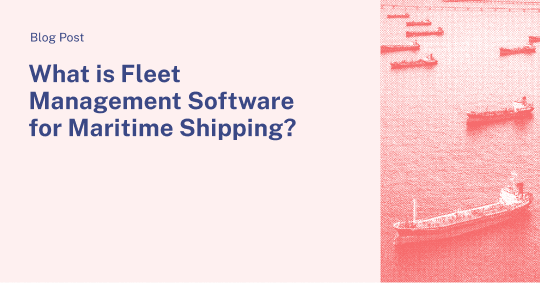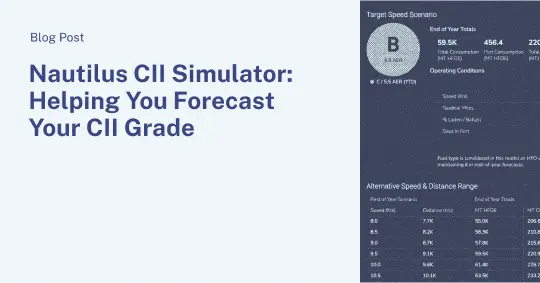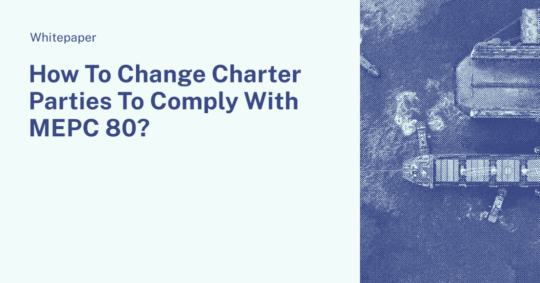Vessel performance management is difficult without a holistic view of technical and operational performance. However, this information is often siloed: owners have access to the technical profile of the ship, but charterers have jurisdiction over day-to-day operations.
Close cooperation between the counterparties, with insight sharing and joint decision making, is essential to achieving technical and operational excellence. However, collaboration between stakeholders is limited despite advances in technology that enable transparency and joint decision making. This lack of collaboration is further exacerbated by the structure of charter parties that perpetuate misalignment and adversarial relationships. The lack of collaboration leads to host of problems, including the following:
1. Poor maintenance planning
When vessel maintenance is not conducted in a timely manner, charterers may be running underperforming vessels for a sustained period of time, leading to additional operating costs for the charterer, and higher emissions claims risk for the owner.
Scheduling maintenance at the right point of time when a certain threshold of degradation or fouling has been crossed is the best way to ensure that underperformance is swiftly curbed and the cost and emissions implications for owners and charterers are kept to a minimum. However, without sufficient data and insights ship owners may not be able to accurately assess the optimal time to conduct maintenance.
2. Vessel underperformance
On the charterers’ side, performance teams are responsible for ensuring that operations are optimized for profit while staying compliant with charter party terms. However, this can be difficult as charterers do not have access to reliable data, creating a challenge with forecasting accurate voyage outcomes.
Often, charterers have to rely on data based on noon reports, which may be susceptible to human error or inaccurate due to the use of values measured at a single point in a day (which are often not representative of performance throughout the day).
While high-frequency sensor data is much more reliable and accurate, this data is typically owned by the ship’s owner, who may not want to share the data with the charterer. However, without accurate insights, charterers are operating in the dark and cannot make optimal decisions.
Collaborative decision making with machine learning
Contemporary advancements in machine learning technologies and high-frequency ship sensor data mean it is possible for both sides to have access to a single source of truth for data about the vessel. These technologies also enable the creation of a ‘Digital Twin’ of the vessel. This allows voyages to be simulated and helps both sides to forecast commercial and environmental outcomes even before the voyage begins.
Digital Twins can also be used to establish a performance baseline based on the performance of the clean vessel, thereby tracking degradation from hull fouling or wear and tear. This allows owners and charterers to know when hull degradation is affecting performance, so they can work together to take prompt corrective action.
Digital Twins can also be leveraged to simulate and analyze a ship’s performance in various scenarios, such as different weather conditions or cargo loads. This information can be used to optimize the ship’s operation and maintenance, and to identify potential issues before they arise.
Owner-charterer collaboration is the key to improved outcomes
Since the introduction of Carbon Intensity Indicator (CII), it has become all the more critical for performance managers on either side of the charter party to synthesize operational and technical information for decision-making . Collaboration is beneficial for both counterparties; each side will gain unmatched insights to manage CII and reduce fuel costs, with the added benefit of strengthening the commercial relationship (read more about CII management in this one pager).
That’s why Nautilus Labs has launched Green Charter™, a new legal framework for charter parties that uses data and machine learning to create an independent, shared source of truth between a ship’s owner and charterer. Green Charter brings the following key benefits to stakeholders:
- Shared access to the technical and operational parameters of ship performance: Owners and charterers can work together on the basis of real-time performance. With accurate insights into the performance profile of a vessel, counterparties have a mutual understanding of how to operate to optimize for specified outcomes.
- Collaborative decision making: With Green Charter, owners and charterers can now make joint operational and technical decisions, based on a shared and trusted single dataset, for optimal commercial and environmental outcomes for both parties.
- Owners are empowered to make timely technical decisions: Owners are focused on true vessel performance instead of static commercial descriptions of vessels. This incentivizes owners to schedule cleaning and maintenance at optimal times to keep vessels running at their peak at any given time.
- Charterers are equipped with insights and data from owners: Charterers can make optimized decisions based on trusted Digital Twins and simulations, as opposed to relying on noon reports, increasing confidence in decision making. Charterers can also operate the vessel on a wider range of speeds, maximizing commercial returns and reducing costs. Additionally, they gain an unprecedented ability to control their Scope 3 emissions.
If you would like to read more about Green Charter, check out this one pager.


